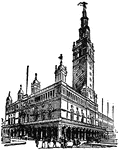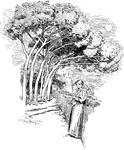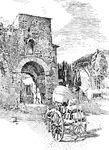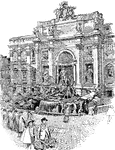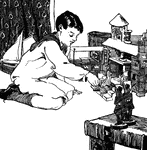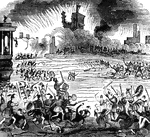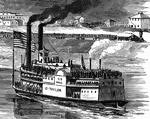
Bellaire
"Bellaire, O.- Steamboats conveying troops and munitions of war for the Federal forces on the Great…
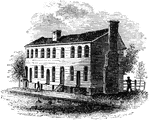
Old City Tavern
"Old City Tavern. This is a frame building, and stands on the northwest corner of Main and Nineteenth…
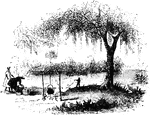
Nelson's Ferry
"View at Nelson's Ferry, the spot here portrayed, was an important locality during the Revolution. It…
!["View of the remains of the French Works. These remains are in the southeastern suburbs of the city, about half way between the [African American] Cemetary and the residence of Major William Bowen, seen toward the right of the picture. The banks have an average height, from the bottom of the ditch, of about five feet, and are dotted with pines and chincapins or dwarf chestnuts, the former draped with moss. The ground is an open common, and although it was mid-winter when I was there, it was covered with green grass, bespangled with myriads of little flowers of stellar form. This view is from the direction of the town looking southeast."—Lossing, 1851](https://etc.usf.edu/clipart/14100/14147/french-works_14147_mth.gif)
French Works
"View of the remains of the French Works. These remains are in the southeastern suburbs of the city,…

Fort Moultrie
"View at Fort Moultrie. This view is from the southwestern angle of Fort Sullivan, looking toward Jame's…
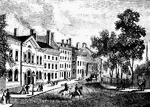
Broadway
"View at the foot of Broadway. General Charles Lee's troops marched to New York."—Lossing, 1851
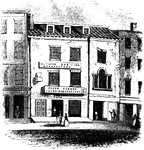
Washington's Head-Quarters
"Washington's head-quarters. I was informed by the venerable Anna van Antwerp, about a fortnight before…

Miltiades
"The chief credit of the battle of Marathon belongs to Miltiades. But for his courage, the Athenians…

Pericles
"The Age of Pericles. The interval of about fifty years between the close of the Persian and the beginning…

Pompey
"Pompey was one of the men, who, having distinguished himself in foreign wars, was looked upon as the…
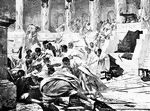
Caesar's Death
"The Death of Caesar. Naturaly such extraordinary success made him enemies, and though the city seemed…

Gustavus Adolphus
"Gustavus Adolphus entered Germany at the head of 16,000 men. Among some of the Protestants there was…
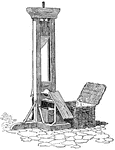
Guillotine
"The guillotine was used during the Reign of Terror of the French Revolution. Now that the power of…
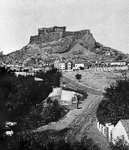
Acropolis
"The citadel of a Grecian city, usually the site of the original settlement, and situated on an eminence…

Passenger Train
"The first passenger locomotive built in the United States. A year after the Enterprise sailed for India,…
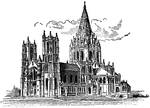
Cathedral of St. John the Divine
"A Cathedral is the principal church of a diocese, and the Cathedral city is the seat of the bishop…
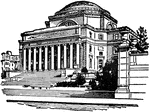
Library of Columbia University
"Columbia University is a seat of learning in New York city. The charter of King's College, the original…

Louvre West Pavilion
"Louvre is the name of a celebrated public building of Paris, situated in the N. part of the city, near…

City Hall of New York
"New York is a city in Southern New York; coextensive with New York, Kings, Queens, and Richmond counties,…
!["New York is a city in Southern New York; coextensive with New York, Kings, Queens, and Richmond counties, on New York Bay, the Hudson and East rivers, Long Island Sound and the Atlantic Ocean; the first city in the United States in population and commercial importance, and after London, the largest metropolitan center in the world. New York is noted for the number and height of its office buildings. In 1911 there were 50 such structures in occupancy, ranging from 14 to 50 stories in height, or from 179 to 700 feet above ground level, and 16 more were nearing completion. The tallest building was that of the Metropolitan Life Insurance Company, 700 and one quarter feet to top of lantern on its majestic tower. Other conspicuous ones [include the] Park Row, 382 [feet]."—(Charles Leonard-Stuart, 1911)](https://etc.usf.edu/clipart/15600/15666/nyparkrow_15666_mth.gif)
Park Row Building of New York
"New York is a city in Southern New York; coextensive with New York, Kings, Queens, and Richmond counties,…

Balcony of House in Nuremburg
"Nuremburg is a city in the Bavarian province of Middle Franconia, Germany; on the Pegnitz river; 95…
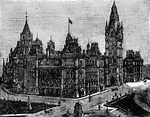
Ottawa Main Parliament Building
"Ottawa is a city, county seat of Carleton co., Ontario, and capital of the Dominion of Canada; at the…

Parthenon
"The Parthenon is a celebrated temple at Athens, consecrated to Athena or Minerva, the protectress of…

Isocrates
"Isocrates was the son of a prosperous flute-maker; he was born at Athens B.C. 436, and lived till 338.…

Ancient Athens
"The mosted noted of the orations of Isocrates is the Panathenaicus or Panegyric of Athens, a work on…

Alcaeus
"Besides Sappho, her friend, perhaps lover, Alcaeus is almost the sole representative of the Aeolic…

Ancile
"Ancilia carried by Salii. The sacred shield carried by the Salii, and made of bronze. The original…

Byzantine court
"Constantine, the first Christian emperor, removed the capital of the world-empire from Rome to Byzantium,…
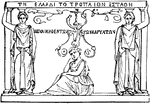
Caryatides
"Caryae was a city in Arcadia, near the Laconian border, the inhabitants of which joined the Persians…
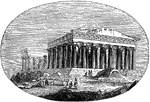
Modern Parthenon
"The Athenians, on their return to Attica, after the defeat of the Persians, found their city ruined…
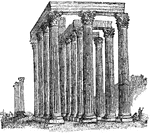
Temple of the Olympian Zeus
"Athens is said to have derrived its name from the prominence given to its worship of Athena by its…

Lectica
"Lectica was a kind of couch or litter, in which persons, in a lying position, were carried from one…

Mobile tower
"They who are within this machine obtain first a view of the place from their high position, and then,…

Vinea
A Vinea, or Testudo, a small structure framed with wood used to protect soldiers attacking city walls.

Paludamentum
"The cloak worn by a Roman general commanding an army, his principal officers and personal attendants,…
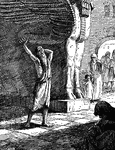
Mordecai Cries out at the City Gates
"Now when Mordecai knew all that was done, Mordecai rent his clothes, and put on sackcloth with ashes,…
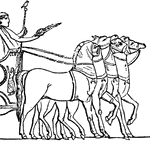
Triumphus
"Triumphus, a solemn procession, in which a victorious general entered the city in a chariot drawn by…
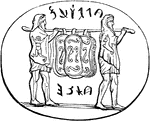
Ancilia
"According to the ancient authorities, it was made of bronze, and its form was oval, but with the two…

Vestales
"Vestaes, the virgin priestesses of Vesta, who ministered in her temple and watched the eternal fire.…

Via
"Via, a public road. It was not until the period of the long protracted Samnite wars that the necessity…

Abram Stevens Hewitt
Hewitt was a congressman, major of New York City, teacher, iron manufacturer, and lawyer.

Felix Adler
Prof. Adler was a Jewish intellectual who founded the Society for Ethical Culture in New York City.

Babylon
"Babylon is said, by some writers, to have owed its foundation to Queen Semiramis, a person whose history,…
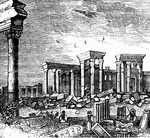
Palmyra
"Amid the barren deserts of Arabia, a few fertile spots of soil arise out of the sandy waste, like islands…




